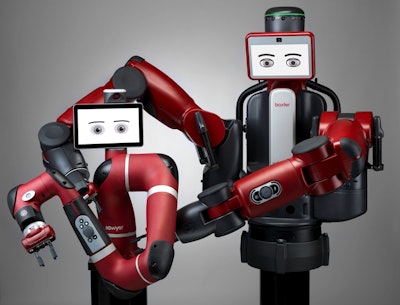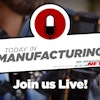
With the coming of the Digital Age, companies are embracing the emerging “no-collar” workforce trend by redesigning jobs and imagining how work gets done in a hybrid human-and-machine environment as reported by Deloitte Global Human Capital Trends report.
The rise of automation and artificial intelligence (AI) may require companies to reinvent worker roles, assigning some to humans, others to machines, and others to a hybrid team. This will require a new type of HR organization, which retrains workers and creates new policies for managing virtual workers and robots that make up the no-collar workforce.
Future Of Advanced Manufacturing
As manufacturing comes back to the U.S., new factories need to be built, robots need to be programmed, and new infrastructure needs to be developed. Advances in artificial intelligence, cognitive technologies, and robotics are upending time-honored assumptions about jobs, careers, the role of technology in the workplace, and how the work gets done. This transformation to a digital economy, while exciting, puts jobs at risk and threatens to limit opportunities for all.
Advanced manufacturing is explored in a new book called “America's Moment: Creating Opportunity in the Connected Age.” The book written by members of the Markle Foundation, a group of chief executive officers, technologists and educators is predicting changes in the employment market unlike anything since the Industrial Revolution. "The divide between blue-collar and white-collar needs to break down if we can create a labor market for the skills needed for the job," said Zoe Baird, CEO and president of the Markle Foundation.
For decades, the theory has been that top students get into the best universities and land white-collar jobs while the rest are forced to endure, at best, in a vocational program at a community college where they will secure blue-collar roles. But the dividing line between these two collars has grown frayed over the years and it's about time we move to a no-collar worker philosophy.
Given how entrenched traditional work, career, and HR models are, reorganizing and re-skilling workers around automation will likely be challenging. It will require new ways of thinking about jobs, enterprise culture, technology, and, most importantly, people. The problem is that no matter what the jobs of the future are, they will surely require greater skill and education — robots can do all the grunt work.
Manufacturers who want to bring production back already complain that they can’t find enough skilled workers in the U.S. for their automated factories. With millions of jobs at risk and a worldwide employment crisis looming, it is only logical that we should turn to education to understand and prepare for the robotic workforce of tomorrow. In an increasingly unstable employment market, developed nations desperately need more science, technology, engineering and math (STEM) skills — with graduates at all levels to remain competitive.
New No-Collar Jobs
The no-collar trend is not simply about deploying AI and robots. Rather, it is about creating new ways of working within a culture of human/machine collaboration. Workers accustomed to providing standard responses within the constraints of rigid processes become liberated by mechanical “co-workers” that not only automate entire processes but also augment human workers as they perform higher-level tasks. Work culture becomes one of augmentation, not automation.
As workers and their companies acclimate to this new work environment, humans may begin reflexively looking for opportunities to leverage automation for tasks they perform. Moreover, workers can be held accountable for improving the productivity of their mechanical co-workers. Finally, in this culture, management can begin recognizing human workers for their creativity and social contributions rather than their throughput (since most throughput tasks will be automated).
Building a no-collar workforce requires deliberate planning. Machines and humans can work well together if you anticipate the challenges and put in place the resources and governance to make all elements of the hybrid workforce successful. Define the difference between skills that only humans have, such as ethical or creative thinking, and nonessential tasks that machines can perform. Understanding that difference can eventually help redesign jobs, identify opportunities for augmentation, and develop automation strategies.
Glenn Marshall Newport News Shipbuilding (retired), Association for Manufacturing Excellence (AME) Management Team. This article originally appeared on the AME webiste, here.























